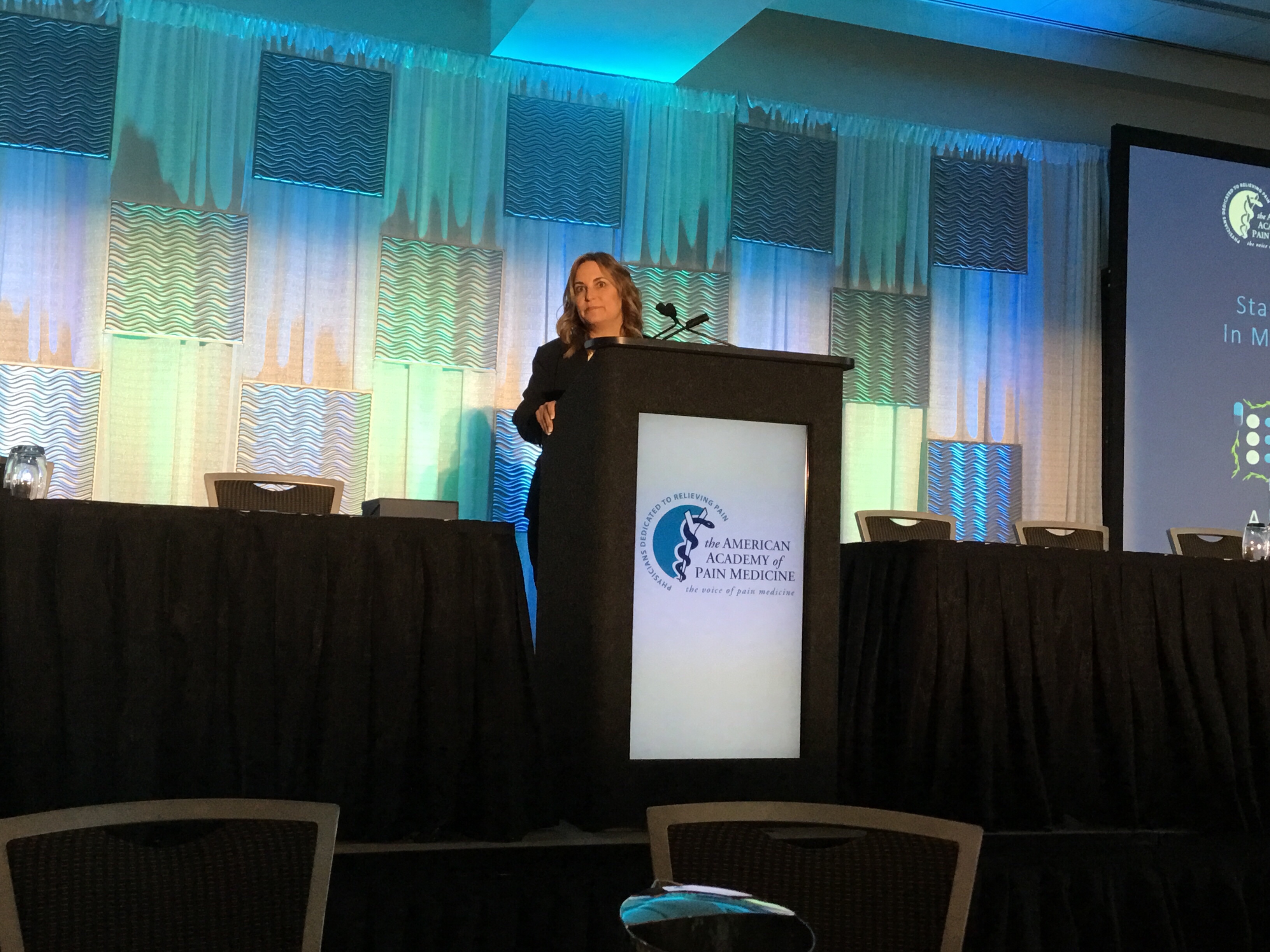Stakeholder Collaboration – Moving Pain Management Forward
At the 2018 American Academy of Pain Medicine Annual Meeting, Kimberly George from Sedgwick discussed the payer’s perspective on how stakeholder collaboration can advance the field of pain management.
Stakeholders
There are many different payers involved in the healthcare payer market. This includes the federal government in terms of Medicare, the Department of Defense, and Federal employees, state Medicaid programs, self-insured employers, third party administrators, and insurance companies. The workers’ compensation system is another element of the healthcare system.
On the group health side, you can see self-insured employers with a few hundred employees and several hundred thousand employees. These self-insured employers have a vested interest in the health and wellbeing of their workforce as they pay a large portion of their healthcare costs out of pocket. More so today than in the past employer leaders view benefits as a talent attraction and retention tool. Employee engagement is critical to bend the cost curve and move the dial on employee health.
Employers in particular are realizing that we need to shift the focus from sick care to well care and wellbeing. This must include the total costs of health including physical health, emotional health, and financial health of individuals within the workforce. The productivity and profitability of employers is greatly impacted by the wellbeing of their employees. Health plus productivity drives business performance, which is another reason health engagement is critical for employers today.
The treatment authorization process is a challenge for medical providers, patients, and payers. It adds costs, confusion, and complexity to the healthcare system. We need to find a way to streamline this process and have more treatments that do not require pre-authorization when certain parameters are met.
Complexity of Pain
Pre-pain is a newer concept and people are gaining a greater understanding of the need to prepare patients for pain so that their recovery is optimized. Providers and payers have an opportunity to better prepare patients for pain and this type of pain management has proven to decrease pain after events such as planned surgery. While the provider community focused on aged claims and patients with ongoing pain issues, the audience was encouraged to find solutions for acute pain to help patients sooner in the management of pain. Also, the term “high impact pain” may be a better descriptor than “chronic” pain as the term chronic implies something that will never end. Words matter and the perceptions that come with chronic pain add stigma and disability annotations that we should consider avoiding.
Solutions
AAPM’s mission is to advance the full spectrum of pain management and the public health need for this has never been greater. Pain management providers that utilize an alternative to opioid medications need to be marketing themselves as a solution to the challenges of pain. As an industry, pain management can do a better job with telling their story, the benefits of their specialty for patients and payers, and advance the medical practice specialty of pain medicine nationally and locally.
Another area of focus that is needed is pain management outcome measurements. How should a payer measure success? How do pain management providers measure success? Consideration needs to be given to developing consistent measurements for treatment outcomes which will allow for identification of best practices and help distinguish medical providers delivering the best results to patients.
Reimbursement models for pain management need to be improved and payer – provider collaborations can advance new models. Interdisciplinary programs in particular are challenged to receive adequate reimbursements for their services with current healthcare, Medicare and workers’ compensation fee models and yet, are critically important for patients and payers. There are some specialty networks being created which focus on quality of care and outcomes and the providers in those networks have the opportunity for higher reimbursement rates, we should collaborate on advancing those concepts.
Next Steps
At the end of the day, while the debate about healthcare is national, the delivery of healthcare is local. Outcomes based payment solutions have potential, as do per-diem reimbursement models. The more payer-provider collaboration in this area the better as the current fee-for-service model does not benefit medical providers, patients, or payers.



